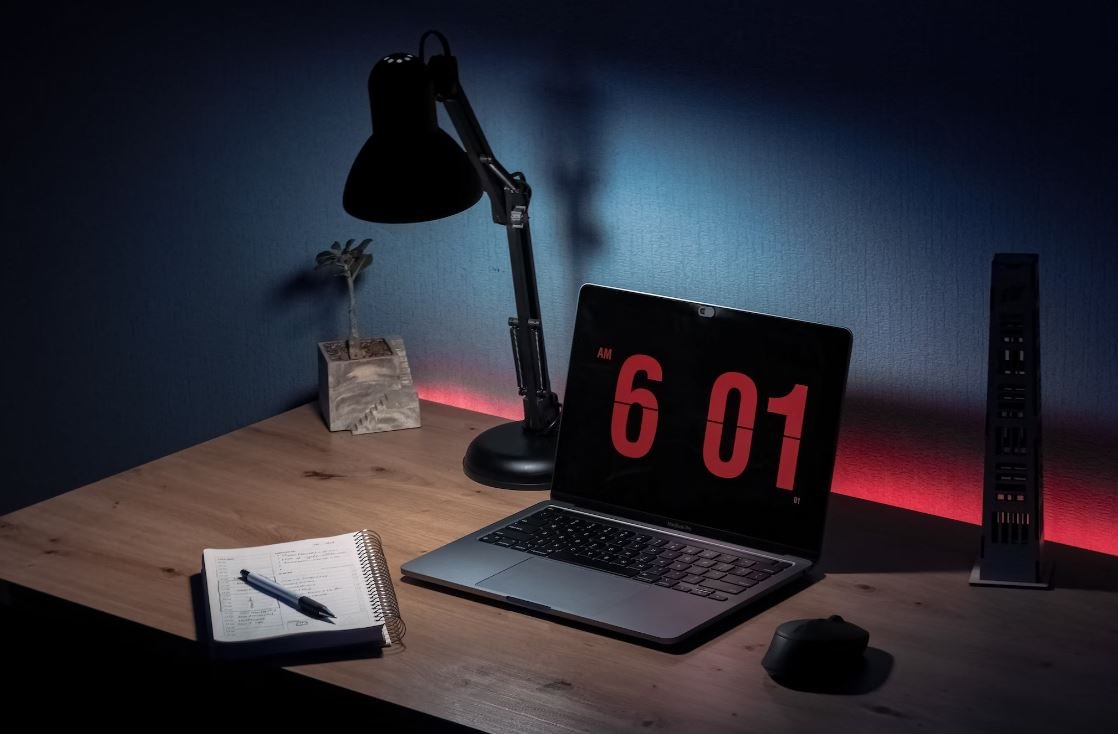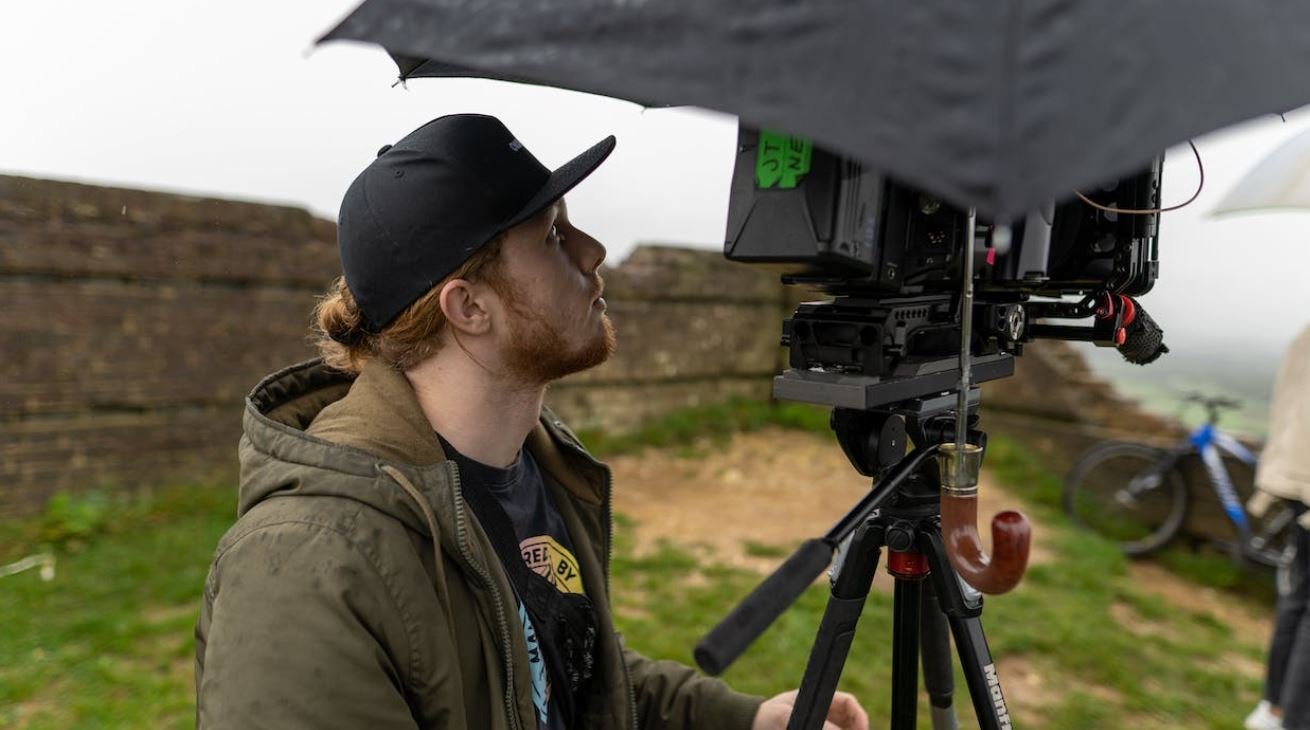Beats to Rap To
Rap music is known for its energetic beats and catchy rhythms. Whether you’re an aspiring rapper or a fan of the genre, finding the right beats to rap to can be crucial for delivering your message with impact. In this article, we will explore the importance of beats in rap music and provide guidance on how to choose the perfect beats for your rap.
Key Takeaways:
- Beats are the rhythmic foundation of rap music, setting the tone and vibe for the lyrics.
- The right beat can enhance the delivery of your rap and make it more memorable.
- Consider your style, lyrical content, and preferred energy level when selecting beats.
Beats and Their Significance
Beats serve as the backbone of rap music, providing a rhythmic structure for the lyrics. They not only accompany the rapper but also create a mood and atmosphere that reinforce the message. The beat sets the tempo, dictates the flow of the lyrics, and can elevate the overall impact of a rap performance.
A well-crafted beat can transport listeners into a different realm, immersing them in the emotions and themes expressed through the rap.
Choosing the Right Beats
When selecting beats to rap to, it’s essential to consider your personal style, lyrical content, and preferred energy level. Here are a few factors to keep in mind:
- Match the beat’s vibe with your rap style – Whether you prefer a laid-back flow or a more aggressive delivery, finding a beat that aligns with your style is crucial to creating a cohesive and authentic rap.
- Consider the lyrical content – Choose beats that complement the themes and messages expressed in your lyrics. For example, if you’re rapping about social issues, a beat with a serious undertone may be more appropriate.
- Energy level – Different beats evoke different energy levels. Determine whether you want a high-energy beat with fast-paced drums or a more relaxed, smooth beat. The energy of the beat should complement the intensity of your rap.
Exploring Different Beat Styles
Rap music encompasses a wide range of beat styles, each with its own unique characteristics and influences. Here are three popular styles:
| Style | Description |
|---|---|
| Trap | A subgenre characterized by heavy 808 basslines, crisp snares, and hi-hat rolls. |
| Boom Bap | A style rooted in 1990s East Coast hip-hop, often featuring soulful samples, hard-hitting drums, and precise scratching. |
| Lo-Fi | Influenced by underground and indie hip-hop, this style often incorporates dusty, low-fidelity samples, vinyl crackles, and relaxed rhythms. |
These different beat styles offer unique opportunities for rappers to experiment with different sounds and textures, enabling them to find their own distinct artistic expression.
Do Your Research
Researching different producers, beatmakers, and beat-selling platforms is a crucial step in finding the right beats to rap to. Online platforms such as Soundcloud, YouTube, and BeatStars offer a vast selection of beats in various styles and genres.
Seeking out collaborations with producers or other artists can also expand your access to high-quality beats that suit your style.
Final Thoughts
The beat you choose to rap to can significantly impact the delivery and overall effectiveness of your rap. Take the time to explore different beat styles and consider how they align with your rap style and lyrical content. Remember, the right beat will enhance your message, making it memorable and captivating for your audience.

Common Misconceptions
Misconception 1: All Beats to Rap To Are the Same
One common misconception people have about beats to rap to is that they are all the same. While it’s true that many beats in the rap genre share similarities, there is a wide range of styles and variations within rap beats that can cater to different artists and their unique vocal styles.
- Rap beats can encompass various subgenres like trap, boom bap, jazz rap, etc.
- Each rap beat has its own distinct vibe and mood, allowing artists to express different emotions and stories.
- The arrangement, tempo, and instrumentation of rap beats also differ, contributing to their individuality.
Misconception 2: Any Beat Can Be Suitable for Rap
Another misconception is that any beat, regardless of its characteristics, can be suitable for rap. While rappers can experiment and bend the rules, not all beats are naturally conducive to rapping. A beat’s structure, tempo, and even its underlying melody play important roles in engineering a rap performance.
- Syncopation and rhythmic patterns in beats can affect the flow and cadence of rapped lyrics.
- The tempo of the beat should align with the desired energy and delivery of the lyrics.
- Rappers should consider the beat’s melodic elements to ensure it complements and enhances their vocal performance.
Misconception 3: The Louder the Beat, the Better
Many aspiring rappers believe that a beat must be exceptionally loud to make an impact. However, loudness doesn’t necessarily equate to quality in beats to rap to. Volume should be balanced with other sonic elements to create an enjoyable listening experience.
- Effective beat mixing and mastering techniques can optimize the overall sound quality and balance of the instrumental.
- The relative loudness of a beat can vary depending on the desired artistic expression and the emotions conveyed in the lyrics.
- A beat that allows the vocals to shine through without overpowering them is often preferred for clarity.
Misconception 4: Rap Beats Are Just Background Music
Some people assume that rap beats are merely background music and don’t require much attention or creativity. However, beats to rap to play a central role in rap music and can significantly influence the listener’s experience.
- Rap beats provide the foundation for the entire track, setting the overall mood and tone.
- The arrangement and composition of beats can create anticipation, transitions, and dynamic moments within the song.
- Effective beat production involves intricate techniques such as sampling, sound design, and drum programming.
Misconception 5: Any Beat Can Be Used Without Permission
A misconception that can lead to legal issues is the notion that any beat can be used without permission. In reality, many rap beats are protected by copyright laws, and artists should obtain the necessary licenses or permissions before using someone else’s beat.
- Creative work, including beats, is automatically protected by copyright when it is fixed in a tangible form.
- Obtaining licenses or permissions from beat producers is essential to ensure legal usage.
- Using someone else’s beat without permission can result in legal consequences and limitations on commercial distribution.

Top Five Rap Songs of All Time
Rap music has produced some unforgettable hits over the years. Here are the top five rap songs that have left an indelible mark on the genre and continue to be beloved by fans worldwide.
| Rank | Song Title | Artist | Release Year |
|---|---|---|---|
| 1 | “Juicy” | The Notorious B.I.G. | 1994 |
| 2 | “N.Y. State of Mind” | Nas | 1994 |
| 3 | “Empire State of Mind” | Jay-Z ft. Alicia Keys | 2009 |
| 4 | “Lose Yourself” | Eminem | 2002 |
| 5 | “California Love” | Tupac ft. Dr. Dre | 1995 |
Artists With the Most Chart-Topping Rap Albums
Some rap artists have consistently dominated the charts with their albums, showcasing their immense talent and appeal. These artists have repeatedly proven their ability to captivate audiences and produce chart-topping records.
| Artist | Number of Chart-Topping Albums |
|---|---|
| Jay-Z | 14 |
| Eminem | 10 |
| Nas | 7 |
| Tupac Shakur | 6 |
| Drake | 5 |
The Evolution of Hip-Hop Fashion Trends
Over the years, hip-hop has not only influenced music but also fashion. The culture brought about various fashion trends that have left a lasting impact on the industry. Let’s dive into the transformation of hip-hop fashion through the decades.
| Decade | Notable Trend |
|---|---|
| 1980s | Gold chains and oversized accessories |
| 1990s | Basketball jerseys and baggy jeans |
| 2000s | Throwback jerseys and bling |
| 2010s | Streetwear and athleisure |
| 2020s | Sustainability and high-end collaborations |
The Impact of Rap Music on Society
Rap music has not only been a form of artistic expression but has also had profound effects on society. It has served as a powerful platform, addressing social issues and sparking important conversations. Here are some of the ways rap music has made an impact:
| Impact | Description |
|---|---|
| Political activism | Rap songs raise awareness about social and political issues. |
| Cultural representation | Rap provides a platform for marginalized voices in society. |
| Influence on language | Rap music has introduced new slang and vocabulary into mainstream culture. |
| Musical innovation | Rappers have pushed the boundaries of traditional music, blending genres and experimenting with new sounds. |
| Empowerment | Rap music has inspired individuals to overcome adversity and pursue their dreams. |
Rap Albums With the Most Diverse Production Collaborators
Successful rap albums often feature diverse production collaborators who bring fresh perspectives and unique sonic elements to the table. Here are some rap albums known for their extensive and diverse production collaborations:
| Album | Artist | Notable Collaborators |
|---|---|---|
| “To Pimp a Butterfly” | Kendrick Lamar | Flying Lotus, Thundercat, Pharrell Williams |
| “The Blueprint” | Jay-Z | Kanye West, Just Blaze, Timbaland |
| “Good Kid, M.A.A.D City” | Kendrick Lamar | Dr. Dre, Hit-Boy, Scoop DeVille |
| “Run the Jewels 2” | Run the Jewels | El-P, Little Shalimar, Boots |
| “My Beautiful Dark Twisted Fantasy” | Kanye West | Pharrell Williams, Mike Dean, RZA |
Rap’s Influence on Pop Culture
Rap music has become an integral part of pop culture, influencing various aspects of our lives beyond just the music itself. From fashion to movies, here are some ways rap has left an enduring mark.
| Aspect | Influence |
|---|---|
| Fashion | Rap artists often set fashion trends that are emulated and followed by fans. |
| Movies | Rap music has inspired a wave of hip-hop-centric movies and documentaries. |
| Gaming | Rap songs are frequently featured in popular video game soundtracks. |
| Language | Rap slang has infiltrated everyday language, shaping the way people communicate. |
| Advertising | Rap music is often used in commercials, amplifying its influence and reach. |
Rap Songs With the Most Profanity
While rap music is characterized by its lyrical prowess, it occasionally embraces explicit language to convey raw emotion and authentic storytelling. Here are some rap songs notorious for their high profanity counts:
| Song Title | Artist | Number of Profanities |
|---|---|---|
| “My Name Is” | Eminem | 398 |
| “X Gon’ Give It to Ya” | DMX | 369 |
| “Criminal” | Eminem | 346 |
| “Gin and Juice” | Snoop Dogg | 313 |
| “All I Need” | Method Man ft. Mary J. Blige | 297 |
Rap Songs That Won Grammy Awards
Rap music has gained recognition on prestigious stages, with numerous artists winning Grammy Awards for their exceptional work. Here are some rap songs that have taken home this coveted accolade:
| Song Title | Artist | Year Won |
|---|---|---|
| “This Is America” | Childish Gambino | 2019 |
| “God’s Plan” | Drake | 2019 |
| “Alright” | Kendrick Lamar | 2016 |
| “Lose Yourself” | Eminem | 2004 |
| “Hotline Bling” | Drake | 2017 |
Female Artists Who Made a Mark in Rap
Although traditionally male-dominated, female artists have broken barriers and left an undeniable impact on rap music. Here are some notable female rap artists who have left their mark on the genre:
| Artist | Notable Songs |
|---|---|
| Queen Latifah | “U.N.I.T.Y.,” “Ladies First” |
| Lauryn Hill | “Doo Wop (That Thing),” “Ex-Factor” |
| Missy Elliott | “Work It,” “Get Ur Freak On” |
| Cardi B | “Bodak Yellow,” “WAP” |
| Nicki Minaj | “Super Bass,” “Anaconda” |
Conclusion
Rap music has transcended boundaries to become a global cultural phenomenon, admired for its lyrical artistry, impactful messages, and trailblazing fashion trends. From the timeless classics that continue to resonate with fans to the innovative sounds of today, rap music has proven to be an enduring force in the music industry. Its influence reaches far beyond the realms of music, shaping fashion, language, and even inspiring activism. With its ability to captivate and empower listeners, rap has undoubtedly solidified its place as a powerful and influential genre in the world of music and popular culture.
Frequently Asked Questions
What are “beats to rap to”?
“Beats to rap to” refers to instrumental tracks or beats specifically produced for hip-hop or rap artists to rap or freestyle over. These beats are often used for practice, recording songs, or performing live.
Where can I find beats to rap to?
You can find beats to rap to on various platforms such as music streaming services, beat selling websites, online communities, or through collaboration with producers. Websites like SoundCloud, YouTube, and Beatstars offer a wide selection of beats for artists to choose from.
Can I use beats to rap to for my own songs?
Yes, beats to rap to are often used by artists to create their own songs. However, if you plan to release your songs commercially or profit from them, you may need to obtain proper licenses or permissions from the beat producers to avoid copyright infringement.
How do I choose the right beat to rap to?
Choosing the right beat to rap to depends on your personal style, lyrical content, and the overall vibe you want to convey. Consider factors such as tempo, mood, instrumentation, and the match between the beat and your vocal delivery. Experiment with different beats until you find the one that resonates with your lyrics and desired sound.
Can I use beats to rap to for performances or live shows?
Absolutely! Beats to rap to are commonly used in performances and live shows. Many artists perform over pre-recorded beats or have a DJ play the instrumental tracks while they rap. It allows for a more dynamic and polished live performance.
How can I legally use beats to rap to without infringing copyrights?
To legally use beats to rap to, you should ensure that you have the necessary licenses or permissions from the beat producers. Some producers offer beats for free, while others may require you to purchase a license for commercial use. Always respect the intellectual property rights of the beat producers.
Are there any copyright-free beats available for rapping?
Yes, there are copyright-free beats available for rapping. These beats are usually released under Creative Commons licenses or are labeled as royalty-free. However, make sure to carefully read and understand the terms of each specific beat, as some licenses may have restrictions on commercial use or require attribution.
Can I modify or customize beats to rap to?
Generally, it is acceptable to modify or customize beats to rap to according to your artistic vision. However, you should be aware of any restrictions mentioned by the beat producers. Some licenses may prohibit significant alterations, resampling, or redistribution without explicit consent.
How can I collaborate with producers to create beats to rap to?
You can collaborate with producers to create beats to rap to by reaching out to them directly through social media, online platforms, or music production communities. Discuss your ideas, preferences, and budget for the project. Collaboration can result in tailored beats that perfectly complement your style and enhance your artistic expression.
Are there any specific genres or styles for beats to rap to?
Beats to rap to can encompass various genres and styles within hip-hop and rap music. Common subgenres include boom bap, trap, lo-fi, west coast, east coast, and many more. The choice of genre or style depends on your artistic direction, lyrical themes, and personal taste.




